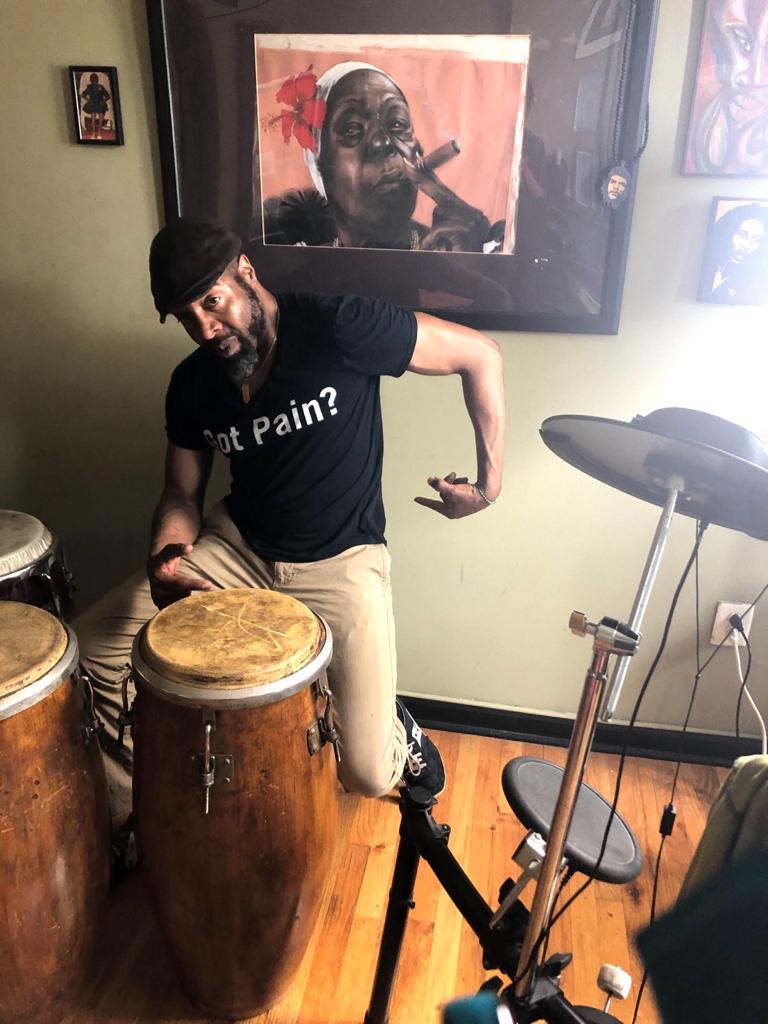Treating folks, like you, who move for a living and love to move

Blogs

Author: Richard Symister
Stretching 4 Drummers: 4 Steps to a "Tight" Stretching ProgramStretching 4 Drummers
4 Steps to a “Tight” Stretching Program

All drummers want to protect their hands, arms or shoulders from injury.
And we are all aware that stretching benefits our drumming bodies in one way or another, right? Some drummers stretch a lot. Some stretch a little. Unfortunately, some do not stretch at all.
Stretching, when performed correctly, prepares your muscles for the tasks ahead and decreases your chances of incurring strains and sprains.
You wouldn’t just jump out of bed and go running, because your body would not be ready for the repetitive motion or impact.
But are you getting the most out of your stretching program? Are your stretching movements helping or hindering your drumming performance.
———————————-
Where did you learn to stretch?

When I ask my drumming clients about their warm, prep and stretching routine, I encounter a few common scenarios:
“My first drum teacher gave me some stretches to do before play, so I’ve been doing them ever since.”
“When I had an arm injury, my physical therapist gave me some general stretches, but they were really basic, and then I was discharged from therapy.”
“I follow along with some YouTube stretching videos for drummers.”
“I just do my own thing, stuff I’ve picked up along the way.”
I am not here to bash or disclaim any stretching programs systems or protocols. My job as a Physical Therapist and Strength and Conditioning Coach is to:
- Inspect & detect for problems
- Protect you from further injury
- Improve your function and performance.
I want to show you a different way to set up your drumming specific stretching program so you get the most out of it. If your program is tailor-made for you, you’ll not only avoid more repetitive stress injuries, but play with the confidence of knowing that your body is well tuned and better fit to perform longer.
———————————-
When Do Drummers Get Injured?
Injuries on and off the drums
Injuries OFF the drum
This type of pain, strain or sprain is suffered away from your drums.
Example #1: Our 42-year-old client is professional percussionists, seeing me for Physical Therapy after a car accident and shoulder injury. Because of his shoulder pain, his neck stiffened up and he lost a lot of his rotation to his left. In order to read music to his left, he’d had to compensate by turning his lower back and, voila, lower back pain!
Example #2: A 32-year-old client comes to see me 3 years after an an right ankle fracture and my hip stiffness through his entire right foot. Because of his lack of ankle mobility, in order for him to gain more speed and power on the base from pedal, my client is forced to use a lot more hip and knee. So now, apart from complaints of chronic ankle stiffness, my client reports new hip and lower back pain on his right side.
Injuries ON the drum.
These are injuries suffered because of drumming itself, usually repetitive stress injuries or poor body-to-Instrument positioning.
Sitting too long can lead to hip flexor tightness. The same can be said for prolonged standing, which can increase soreness of the feet and tighten calves
Trying to play beyond your reach can strain your shoulder rotator cuff muscles.
Playing with bad “ergonomics“ or posture for extended periods of time (days, weeks) can teach your body bad habits, leading to negative postural adaptations (I.e., rounded shoulders, flat back, forward head).
Playing beyond your capacity, not taking breaks or rest or playing past the point of pain can lead to acute and chronic muscle tightness.
Holding or carrying an instrument (marching band bass drum, timbales, berimbau) for long periods, particularly if you’re not strong or fit enough to appropriately and safely manage the load, may cause muscles to become “overloaded”, strained and injured.
———————————-
Stretching 4 Drummers
4 Phases

Through both personal and clinical experience, research and listening to my drumming clients, I’ve developed the Stretching 4 Drummer’s program, which is a similar program I use for my dancers and athletes.
Remember, drumming is a sport!
1) Prep
Muscles prefer to be stretched when they are warm. Simply put, a warm-up is increasing the tissue temperature in your muscles, usually with movement. These movements can be anything from biking to arm circles, to jumping jacks to jumping rope. The idea is not to fatigue or exhaust your muscles, but to increase blood flow, preparing them for the stretches ahead.
2) General stretching
Do you remember the old knee bone is connected to the hip bone song? Well it’s important that you keep the entire body mobile and working in tandem, so we rely on general whole-body stretching. But there are so many stretching programs out there, it’s hard to choose the right one for you. Listen, there is no perfect program, which it’s wise to try a few to find your fit.
We often offer our clients 3 options, not just for variability, but for the opportunity to see what works best for them as far as repetitions, duration and intensity.
- Yoga: The Yoga Sun Salutation works for almost anyone for a full body flexibility session. What’s great about this is there a modifications and progressions (which we will discuss later).
- Dynamic Warm-up: The NSCA uses a series of 6 wonderful movements during their NSCA Dynamic Stretching Movement Assessment (DSMA) with their athletes. Did I say drumming is a sport yet? The DSMA will also point out “weak spots” such as right versus left symmetry, balance issues and, of course, joint restrictions/muscle tightness.
- Build Your Own Program: Let’s get really specific and put together a stretching program just for you. Going through a head-to-toe functional movement screen with a Physical Therapist or Strength and Conditioning Coach can provide oodles of information and save you hours of wasted time building a foundation of key movements to work specifically on your deficits.
Here are are 3 of our faves!!!
3) Specific Stretching
The demands on your muscular skeletal system playing the drum set are much different than those of the conga or the Kalimba or Shekere. Playing different Percussion instrument means that different muscles and joints get worked. The more different instruments you play, the more of a triathlete or multi-sport athlete you’ve become. Therefore your stretches should gradually transition from “general” to “specific”, based upon your drumming style, positioning and posture and instrument.
Those who stand may want to focus more on stretching out their hips and ankles.
Chest, shoulder and neck stretches may greatly increase comfort for those who carry their instruments
We spoke :about hip flexors tightening with prolonged sitting. The Spiderman or a hip flexor lunge stretch with some client-specific variations may benefit sitting players.
Again, your best bet is to the seek out the professional who can inspect, detect and protect you from movement dysfunctions that be detrimental to your body and playing performance.
4) Progression
With consistent practice, you will become more limber, Improve and eventually outgrow one or your entire stretching program.
Increased flexibility does not equal increased performance. So I’m not saying you have to become Gumby, But even after you’ve gained the necessary range of motion and mobility for fluid drumming, you want to intermittently offer new challenges and increase the intensity of your program. This is not just to mollify boredom. Shaking things up now and then will help to stimulate your neuromuscular system so you can better adapt to this increased drumming and performance challenges. In other words, you will keep your system from getting lazy.
———————————-
Wrap Up
Stretching and mobility work are necessities for improved drumming performance, regardless of your posture, position or instrument. There are basic stretching principles that, if followed correctly, will yield much better results vs traditional, generic stretches and routines.
Learn and practice this simple Stretching 4 Drummers program and feel the difference during and after both practice and performance.
Heal. Move. Stretch. Evolve.
Listen to our PODCAST on Stretching 4 Drummers and Athletes with Dr. Bo Babenko from FitCarePhysio.

